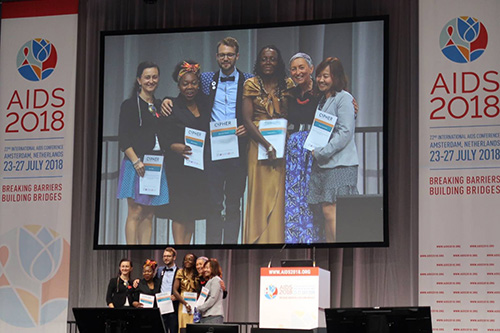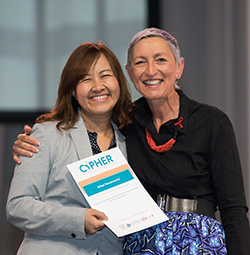Improving Care for Thai Youth Living with HIV

In the Asia-Pacific, Thailand has been a leader in the HIV response, offering free HIV care and treatment through its universal health coverage program. But as in much of the region, increasing numbers of new HIV infections in young people aged 15−24 pose a serious problem. In 2017, 7,218 Thai youth were diagnosed with HIV, up from 2,995 in 2013. The majority of new infections in Thailand now occur among youth.1 Most are from marginalized key populations: men who have sex with men, people who inject drugs, and sex workers.
“We urgently need to improve healthcare quality for HIV-positive youth for their own health, to limit HIV transmission, and to achieve the UNAIDS 90-90-90 targets.”
Young people diagnosed with HIV often fall out of care or do not receive adequate care. “When we analyzed data from the Thai National AIDS Program (NAP), we found a high rate of loss to follow-up among youth living with HIV,” said Dr. Sirinya Teeraananchai, a biostatistician at The HIV Netherlands Australia Thailand Research Collaboration (HIV-NAT) who also works on several projects for the TREAT Asia pediatric network of IeDEA Asia-Pacific. “And only half had an HIV-RNA test [to determine if the virus was under control] within a year of beginning treatment.”
Dr. Teeraananchai is the latest TREAT Asia investigator to receive a prestigious Collaborative Initiative for Paediatric HIV Education and Research (CIPHER) grant, established by the International AIDS Society in 2012. The program, which receives funding from ViiV Healthcare and Janssen, provides early-stage investigators with grants of up to $150,000 for pediatric and adolescent HIV research projects in resource-limited settings.

Using data from the Thai NAP, Dr. Teeraananchai’s CIPHER project will describe linkage from HIV diagnosis along the treatment cascade in youth living with HIV. She will compare the periods 2008−2013 and 2014−2018, before and after treatment guidelines were changed to stipulate that ART should be started immediately upon HIV diagnosis, regardless of CD4 count. The study will also compare treatment outcomes across service models that vary in the size of the HIV clinic, the proportion of patients who are youth (age 15-24), and whether a hospital provides youth-focused clinics. After analyzing the data, the study team will evaluate which practices yield the best results, and will use that information to develop a package of interventions that will be implemented and assessed through 10 HIV clinics in Bangkok.
“We urgently need to improve healthcare quality for HIV-positive youth for their own health, to limit HIV transmission, and to achieve the UNAIDS 90-90-90 targets,” said Dr. Teeraananchai. “If our interventions are successful, we hope they can be emulated by other research and clinical care groups.”
Related
TREAT Asia Investigators Selected in Three Rounds of IAS CIPHER Grant Program
Share This:
